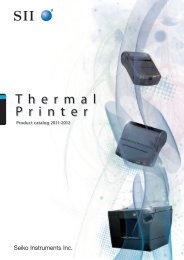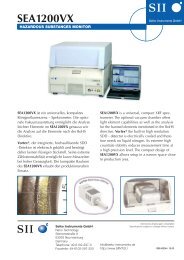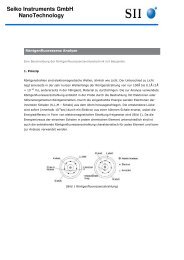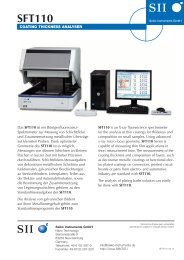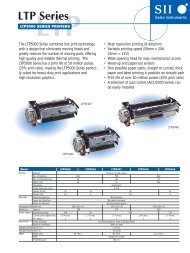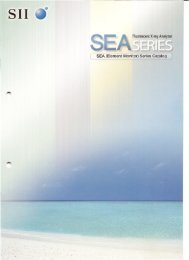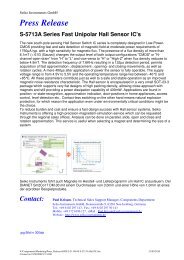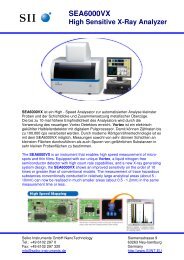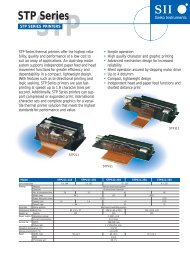XRF principle - Seiko Instruments GmbH
XRF principle - Seiko Instruments GmbH
XRF principle - Seiko Instruments GmbH
You also want an ePaper? Increase the reach of your titles
YUMPU automatically turns print PDFs into web optimized ePapers that Google loves.
When a sample that contains element A is irradiated primary X-ray,<br />
fluorescent X-ray of element A is generated, but the intensity of this<br />
fluorescent X-ray is dependent on the amount of element A in the sample.<br />
The more element A contained in the sample, the higher the intensity of the<br />
fluorescent X-ray that is generated. Taking this into account, if the<br />
fluorescent X-ray intensity and concentration of an element contained in a<br />
sample is known, then we can go in reverse and find how much element A<br />
contained in another sample by its fluorescent X-ray intensity.<br />
When conducting quantitative analysis with fluorescent X-ray, there are two<br />
basic methods. The first is to create a standard curve. This method involves<br />
measuring several samples with a known element concentration, and finding<br />
the relationship between the intensity of the measured element's fluorescent<br />
X-ray and the concentration. By referring this relationship, element<br />
concentration of unknown sample is obtained only with information on its<br />
fluorescent X-ray intensity.<br />
The other method is known as the fundamental parameter method of<br />
theoretical calculation, or the FP method. With this method, if the type and<br />
properties of all elements that compose a sample are known, then the<br />
intensity of each fluorescent X-ray can be derived theoretically. By utilizing<br />
this method, the composition of unknown sample can be extrapolated by its<br />
fluorescent X-ray intensity of each element.<br />
3. Conclusion<br />
Since X-ray fluorescence analysis can analyze a sample non-destructively<br />
and quickly, it can be applied to a wide range of use such as manufacturing<br />
and quality control. Recently, as techniques for high-sensitivity, technologies<br />
such as filtering and lamination have been applied to eliminate the<br />
interference of background, which made measurement of trace amounts<br />
possible. This analysis method will become more widespread particularly in<br />
measurements of hazardous metals in materials and soil.



